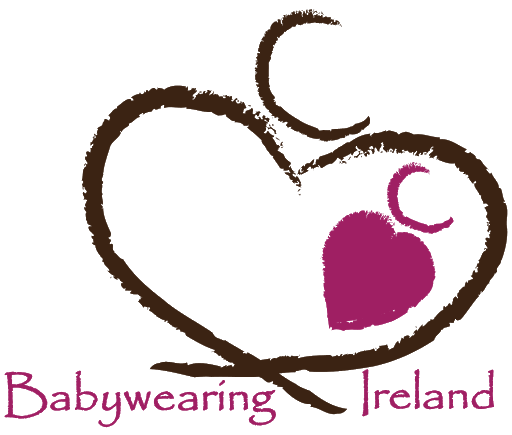
Chest/Breastfeeding in a Sling
Special thanks to the contributor of this post - Ina Doyle, Certified BWC, Adv. BFC
Introduction
When asked about a sling to use, a lot of nursing parents add “one I can feed in” to their requirements. Often followed by “I need to be able to feed the baby and have both hands for the toddler”. Phew, now there are a few boxes to tick!
Theory and Practice
In theory, you can feed in all ergonomic slings, from stretchy wrap to buckle carrier. The thing is: body parts required for both – feeding and wearing – differ in shape and size between nursing parents and babies. What works for one nursing parent, doesn’t necessarily work for the other. Even the same sling on the same nursing parent often works differently for subsequent babies.
And, feeding and slinging are two separate skills. You should only combine them once you are confident in both separately. No matter how many babies you’ve fed and slung before, you need to get to know the newest family member (and your new post-partum self!), get familiar with their feeding likes and dislikes, and see how you both feel about using your sling. Most people find that the more children they have, the quicker they get the hang of, and have the need for, feeding in a sling.
Showing and teaching – different skill sets
Just like feeding and wearing are different skills to learn, they are also two separate skills to pass on. An experienced parent who has chest/breastfed their own child(ren) in a sling can show you how they did it themselves, to give you an idea of options. This can happen at a Sling Meet, for instance. The crucial difference between showing and teaching is that showing is passing on personal experience, whereas teaching should always be focused, based on best practice, up-to-date, evidence-based information and include continuous assessment.
If you’d like somebody to teach and assess your technique of feeding in the sling (latch, body position, placement of sling etc), and guide you through the steps, I’d strongly advise you to contact somebody qualified, skilled and experienced in assessing, teaching and supporting parents in both skills. For instance, I am a qualified Breastfeeding Counsellor and Certified Babywearing Consultant and need to commit to continuing professional development to renew these qualifications. And I use my skills week in week out, both in private practice and as a volunteer.
Hands-free – or maybe not
For most people, feeding in a sling isn’t actually hands-free. Most certainly not at the beginning. Some support of either breast tissue or baby is necessary in most cases.
To be able to feed effectively, the baby’s head needs to be supported but not restricted. Just as much as there should be no hands pushing the baby’s head into the breast tissue, there should be no fabric doing it either. The baby’s head needs enough space to tilt back for a deep latch and easily unlatch when required.
Another thing to consider: there’s only so far you can lower the baby and sling safely and comfortably. Baby and breast tissue need to meet in the middle somewhere and your hand may be required to keep them there.
As baby gets older and sturdier, most people find they can achieve hands-free feeding – often, the baby’s hands take care of the “meet-in-the-middle” part then 🙂
Positioning
It is safest to feed babies upright in a sling to protect their airways. Generally, nursing parents need to lower the sling a bit to be able to feed. This moves the baby off your centre of gravity and is not comfortable for longer stints. Once the baby is finished feeding, it is essential to return them to a safe position in the sling, following the SLING guidelines. Even if the baby has just fallen asleep while feeding for the first time in 24 hours and you are worried they’ll wake… If they do, it is rare for them not to drift right back to sleep once snuggled up safely on your chest again.
Just because you can …
…doesn’t mean you have to! Especially in the immediate postpartum period, it’s easy to overdo it, if you are not “sitting under baby”. Feeding in a sling is a handy tool to have in your parenting tool kit if you are stuck (like when you are doing the shopping!). But don’t forget to use feeds to sit down for a few minutes, look at a book with your toddler, draw a funny picture with them, let them cook you a pretend cuppa … or lie on the floor and be a bridge for their cars.
